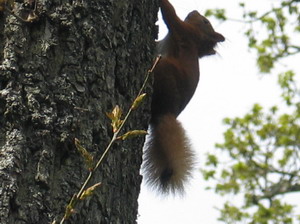|
Pitlochry Discussion Weekend 2007 practical demonstrations

The Explorers garden is divided into areas corresponding to thee parts of the world which various plant hunters visited. The area nearest the entrance is the Francis Masson area.

Francis Masson
Masson was born in Aberdeen in 1741 and died in Montreal in 1805. George III was on the throne. He was the first plant hunter sent out by Kew gardens. Sir Joseph Banks sent him to South Africa. He travelled on HMS Resolution with Captain James Cook. Thus in autumn the pamts we see here are Red Hot Pokers, in this case Yellow Hot Pokers and Nerine bowdenii. Phormiums from New Zealand provide fine architectural background structure. Masson discovered 1700 species
 
Plants in the Masson area
The SRGC has sponsored the construction of a new bed in the Explorers Garden in which 'peat garden plants' can be grown. The work was carried out and designed by Peter Korn from Gothenburg along with his friend Johan.

Peter Korn
The new peat wall is not only functional it is an architectural feature in its own right. It follows the top side of the curving path leading up from the Masson area to the David Douglas Pavilion. It undulates gently up and down, in and out. The seats in the pictures were already in situ and Peter curved he peat walls behind them. The height varies along the course of the path.

The new retaining beds and rock outcrops following the path
It is in effect a retaining wall up to about 4 feet high leading to a flatter bed under the wooden sculpture under the trees. The new peat garden enhances the sculpture which previously was a bit lost. Now it is a focal point on the corner.
 
The flatter area and wooden sculpture
Our late honorary president Alf Evans wrote a superb book 'The Peat Garden and its Plants' in 1974. It has been out of print for a long time but is still one of the best on the subject. Some would say the only worthwhile book on the subject. Since it was written there has been much discussion about using peat in the garden. Peat is certainly still widely used in horticulture. I believe the RHS discourages us from using it in the garden but at Gardening Scotland peat is sold to exhibitors if they want it. In Sweden peat is regarded as a renewable resource. The peat blocks used at Pitlochry came from Sweden. These Swedish peat blocks are large and DRY. They can be sawn to shape.

Sawing the peat blocks
Because they are dry when set out, they are unlikely to shrink in subsequent summers as wet blocks could do. These dry blocks will swell in the wet and push closer together. The blocks are backed with very sharp draining sand to separate them from soil. Peter says that if they are in contact with soil then the blocks will start to decompose like compost. With the sand backing them they last much longer.
Peter noticed some natural rocks and decided to incorporate rock outcrops into the peat walls. These are built as crevice outcrops. Again the rocks are set into sand and packed with sand between the rocks. As you pass them they look completely natural.
 
Rock crevice outcrops
Towering overhead there are old oak trees which evidently had a good summer as they are loaded with acorns. While Peter was giving his demonstration even gentle breezes brought down showers of acorns. Some of the 'politically correct' councils would have a field day netting off the oak trees!

Bark incorporated into the soil and used as a mulch. Notice all the acorns!
No-one minded them and I am sure the red squirrels will not starve next winter.

Go and see it. It is absolutely wonderful. It fits in and looks like it has always been there. And the stone crevice outcrops….. Just see for yourselves!
The following pictures show lots of SRGC members listing to Peter and asking questions about his work
 
 
 
Susan Band's Bulb Demonstration
Meanwhile inside the Douglas Pavilion, Susan Band held her audience captivated by her demonstration and talk on bulbs many of which she gave away at the end of the talk.

Ian Christie tries to get into the demonstrations in the garden
Susan demonstrated hw she grows and especially how she propagates her 'bulbs and tubers'. She used live material of many of her favourite plants.

Plastic bags and bits of tubers were passed around the room.

Susan's tips are based on practical experience and not regurgitated bits from books. When you listen you realise just how much she knows and cares about her plants. At the end of the talk Susan invited everyone to help themselves to all the bits and pieces used in the demo. There was a mad rush for the table!

Next year the 'Discussion Weekend 2007', hosted by the Glasgow groups, will be held in the Beardmore Conference Hotel, Clydebank beside Glasgow. They do Health and Beauty Weekends. I need one of those. Do You?
Be there! See you there!
Look up the hotel on www.bw-beardmorehotel.co.uk/
^ back to the top ^
|

